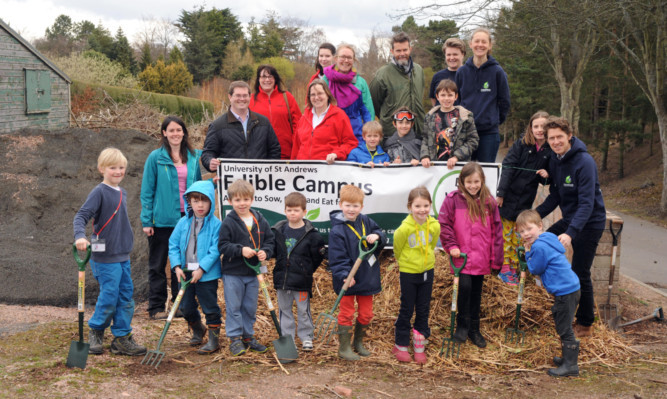A St Andrews partnership aiming to reduce its carbon footprint has taken a massive step forward.
Three environment groups are celebrating the recent announcement by the Scottish Government’s climate challenge fund that they will share £149,996 to create a new low-carbon community hub this year.
St Andrews Botanic Garden, Transition University of St Andrews and the St Andrews Environment Network have worked together on the project, which will create a new space where the community can practise and share carbon-cutting activities, such as food growing, clothes and furniture repair, DIY home insulation, composting and bike maintenance.
The hub will be based on an underused area of ground within the botanic garden site and will feature a significant new community food growing space, a skill share bothy, community composting facility and an important new secure entrance route onto a local cycle path.
This partnership approach is welcomed by the climate challenge fund, which has now provided six years of funding for St Andrews groups in recognition of the active and committed community.
The hub aims to save 180 tonnes of CO2 a year by enabling residents to make low-carbon choices in their lives.
The partnership is now seeking help from volunteers and groups to create the facility over the next six months while also establishing a regular series of workshops and training events linked to the sharing skills that reduce waste, tackle home energy and encourage local food growing and consumption.
An important part of the project will be a home and business energy advice scheme targeting St Andrews alongside the development of a community composting facility to deal with around 200 cubic metres of organic waste from the site and a community not served through organic waste collections.
Transition University of St Andrews co-chairman and student Andrew Nail-Cain saw this project as a sign of exciting things to come.
“The hub will provide St Andrews’ diverse and active community with the tools to tackle climate change through practical action,” he said.
“We are so pleased to be developing this important project with St Andrews Envoronment Network and the Botanic Gardens and look forward to getting started on the hard work of building this new community facility with all our volunteers,” he said.
With projects starting next month the partnership is inviting students, university staff, residents and groups to get in touch if they would like to be involved in creating or using the hub.
Picture by David Wardle
